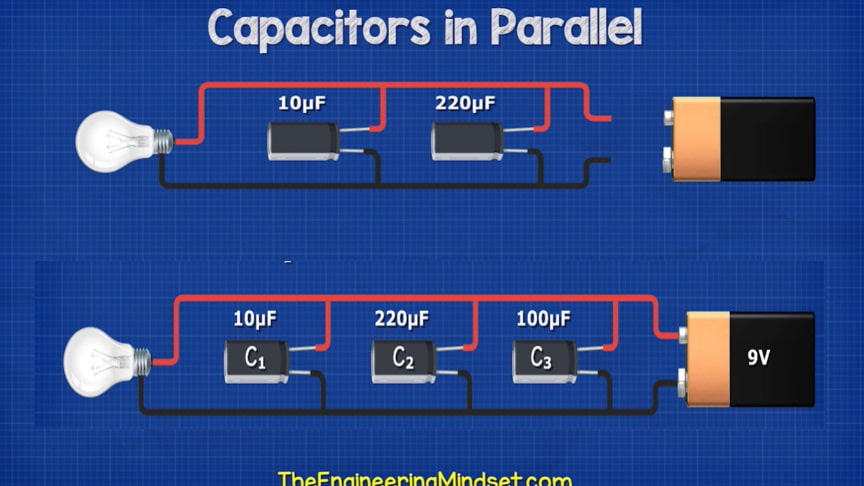A capacitor is a device that stores electrical energy in an electric field. It is a passive electronic component with two terminals.If two or more components are connected in parallel, they have the same difference of potential (voltage) across their ends. The potential differences across the components are the same in magnitude, and they also have identical polarities. The same voltage is applied to all circuit components connected in parallel.
source/image(PrtSc): The Engineering Mindset
The total current is the sum of the currents through the individual components, in accordance with Kirchhoff’s current law.When capacitors are connected together in parallel the total or equivalent capacitance, CT in the circuit is equal to the sum of all the individual capacitors added together. Watch the video from The Engineering Mindset for more info:
This is because the top plate of capacitor, C1 is connected to the top plate of C2 which is connected to the top plate of C3 and so on.
Advertisement
The total capacitance of capacitors in parallel is equal to the sum of their individual capacitances:Learn how to calculate circuits with capacitors in parallel with this tutorial on electronic engineering.The working voltage of a parallel combination of capacitors is always limited by the smallest working voltage of an individual capacitor./ The Engineering Mindset











